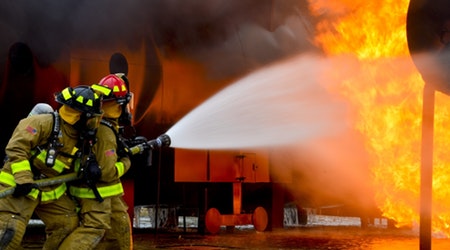Introduction
Fire safety is an imperative aspect of community living, which, when overlooked, could lead to devastating consequences. The role of firefighters extends beyond responding to emergency calls; they are the pillars of community education and engagement on fire safety and prevention. Through various initiatives, firefighters strive to foster a culture of safety and prevention within the communities they serve.

Fostering Community Partnerships
Community Analysis and Partnership Development
Understanding the unique needs and risks of a community is the first step towards effective engagement. Firefighters often initiate a community analysis to gather data on prevalent fire risks, which in turn, guides the formulation of targeted fire safety campaigns. A significant part of this process involves developing partnerships with local stakeholders. These collaborations with schools, businesses, and local organizations enhance the reach and impact of fire safety programs.
Benefits of Community Partnerships
Community partnerships significantly benefit both the fire departments and the community. They facilitate resource sharing, foster innovation, and enhance community trust in fire safety initiatives. Through these partnerships, firefighters can promote a customer service-driven approach, emphasizing the importance of community involvement in fire safety and prevention efforts.
Engaging the Community in Fire Safety Habits
Promoting Daily Fire Safety Habits
Initiatives like the New Year’s Resolution campaign by Fire & Life Safety educators emphasize incorporating fire safety habits into daily routines. This initiative encourages communities to adopt safety measures such as proper use of smoke and CO alarms, safe cooking practices, and home escape planning, aiming to reduce the staggering statistics associated with fire incidents.
Tackling Perception of Risk
A significant challenge in fire safety education is addressing the perception of risk. Many individuals underestimate the likelihood of fire incidents, which hampers the adoption of fire safety practices. Fire safety campaigns aim to provide real-life data and share personal stories to help individuals connect the dots and understand the potential risks better.
Building Trust and Strong Relationships
Establishing Trust through Transparency
Trust is a cornerstone of effective community engagement. Firefighters work diligently to build trust by maintaining transparency through online platforms and community meetings. A strong online presence, showcased through informative websites and active social media profiles, enhances community interaction and education on fire safety matters.
Effective Communication
Effective communication fosters a better understanding of fire risks and the necessary preventive measures. By using easy-to-understand language and relatable examples, firefighters ensure that the community receives and comprehends the fire safety information disseminated.
Training Firefighters for Community Risk Reduction
Equip with Necessary Skills
Training programs equip firefighters with the skills necessary for community risk reduction efforts. These programs cover a range of topics including fire prevention education, community engagement strategies, and the use of various tools and technologies in fire safety promotion. Additionally, the modern approach to course delivery allows firefighters to access relevant training online, enabling them to balance their demanding work schedules with continuous learning and development.
Continuous Evaluation and Improvement
The effectiveness of community engagement strategies hinges on continuous evaluation and improvement. Fire departments often collect and analyze data to assess the impact of their community engagement efforts, adjusting their strategies accordingly to achieve better results.
Utilizing Public Events and Digital Platforms
Leveraging Public Events for Awareness
Public events like community fairs and school exhibitions provide excellent platforms for firefighters to interact with the community. They utilize these events to showcase fire safety equipment, demonstrate safe practices, and distribute educational materials, making fire safety education an engaging and interactive experience.
Digital Platforms for Continuous Engagement
Digital platforms augment the efforts of firefighters in community engagement. They use social media, blogs, and online resources to share fire safety tips, updates, and educational materials. These platforms offer a convenient avenue for the community to access fire safety information, engage with firefighters, and stay updated on local fire incidents and safety campaigns.
Collaborative Efforts in Community Risk Reduction
Inter-Agency Collaborations
Collaborations between fire departments and other local agencies amplify the impact of fire safety campaigns. By pooling resources and expertise, these collaborative efforts address community risks holistically, promoting a safer living environment.
Community Involvement in Risk Reduction
Community involvement is a hallmark of successful risk reduction programs. Engaging the community in identifying risks, developing solutions, and implementing safety measures fosters a sense of ownership and responsibility towards creating a safer community.
Conclusion
Firefighters play a pivotal role in community education and engagement on fire safety and prevention. Their efforts encompass a wide range of activities aimed at fostering a culture of safety and prevention. Through continuous engagement, education, and collaboration, firefighters are making strides in building fire-adapted communities, ensuring a safer tomorrow for all.
